Abstract
PURPOSE: To determine if anisometropia increases the risk for the development of accommodative esotropia in hypermetropia. METHODS: Records of all new patients with a refractive error of > or = +2.00 (mean spherical equivalent [SE] of both eyes) over a 42-month period were reviewed. Three hundred forty-five (345) patients were thus analyzed to determine the effect of anisometropia (> or = 1 diopter [D]) on the relative risk of developing esodeviation and of requiring surgical correction once esodeviation was present (uncontrolled deviation). RESULTS: Anisometropia (> or = 1 D) increased the relative risk of developing accommodative esodeviation to 1.68 (P < .05). Anisometropia (> or = 1 D) increased the relative risk for esodeviation to 7.8 (P < .05) in patients with a mean SE of < 3 D and to 1.49 (P < .05) in patients with SE of > or = 3 D. This difference was significant (P = .016). In patients with esotropia and anisometropia (> or = 1 D), the relative risk for an uncontrolled deviation was 1.72 (P < .05) compared with nonanisometropic esotropic patients. Uncontrolled esodeviation was present in 33% of anisometropic patients versus 0% of nonanisometropic patients with a mean hypermetropic SE of < 3 D (P = .003); however, anisometropia did not increase the relative risk of uncontrolled esotropia in patients with SE of > or = 3 D. Although amblyopia and anisometropia were closely associated, anisometropia increased the relative risk of esodeviation to 2.14 (P < .05) even in the absence of amblyopia. CONCLUSIONS: Anisometropia (> 1 D) is a significant risk factor for the development of accommodative esodeviation, especially in patients with lower overall hypermetropia (< 3 D). Anisometropia also increases the risk that an accommodative esodeviation will not be fully eliminated with hypermetropic correction.
Full text
PDF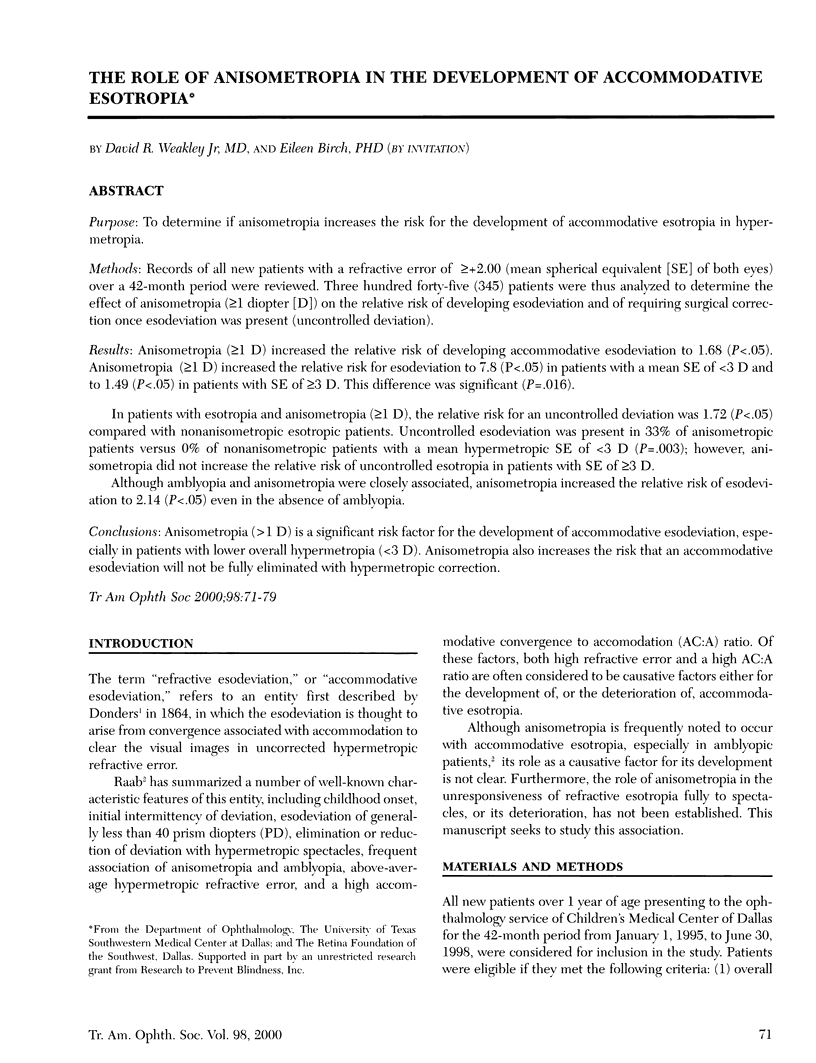
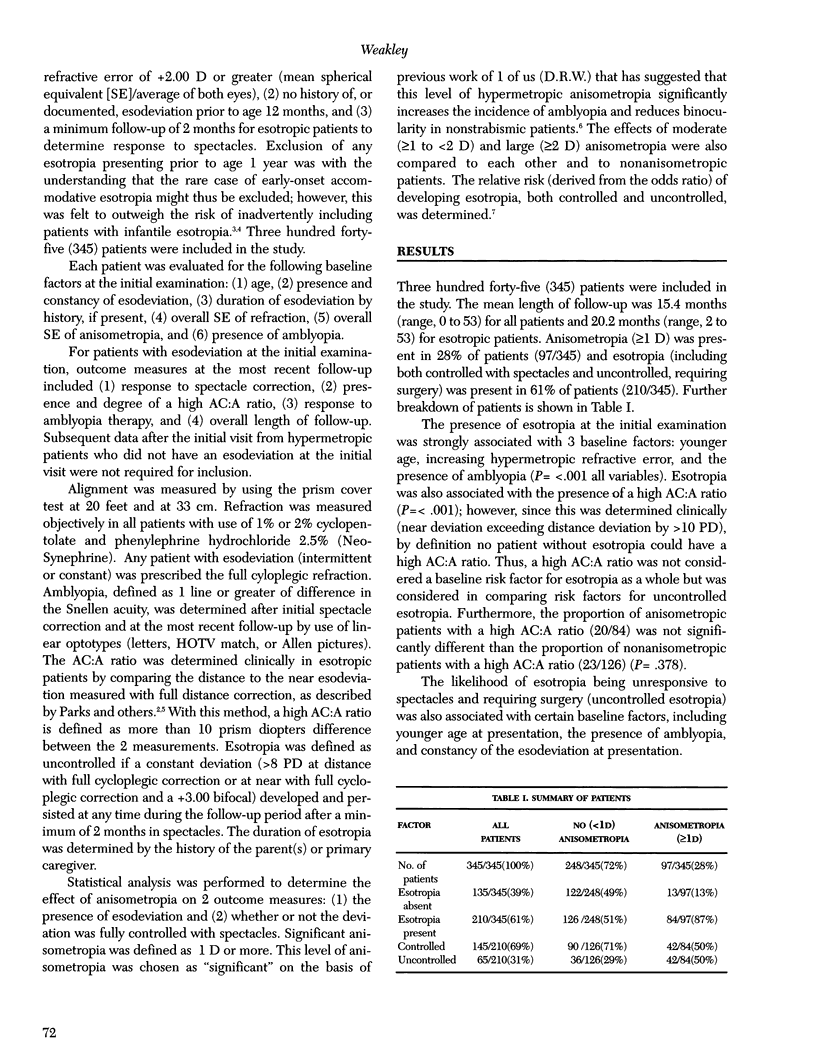

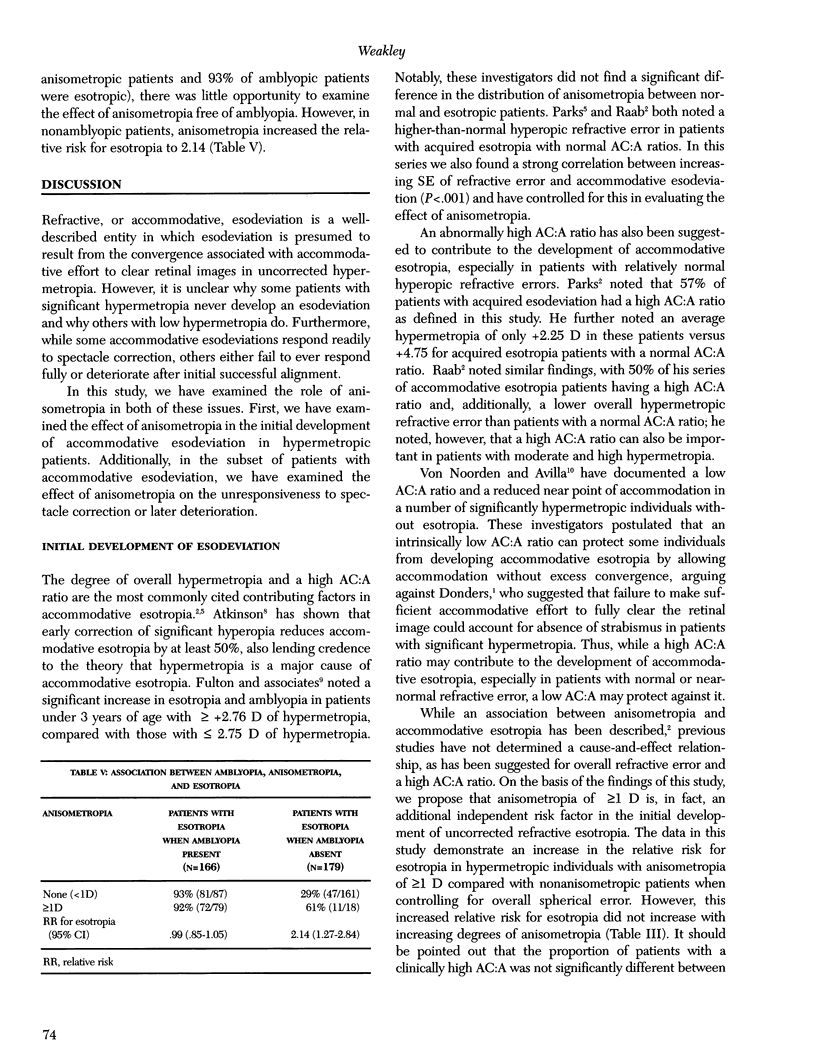

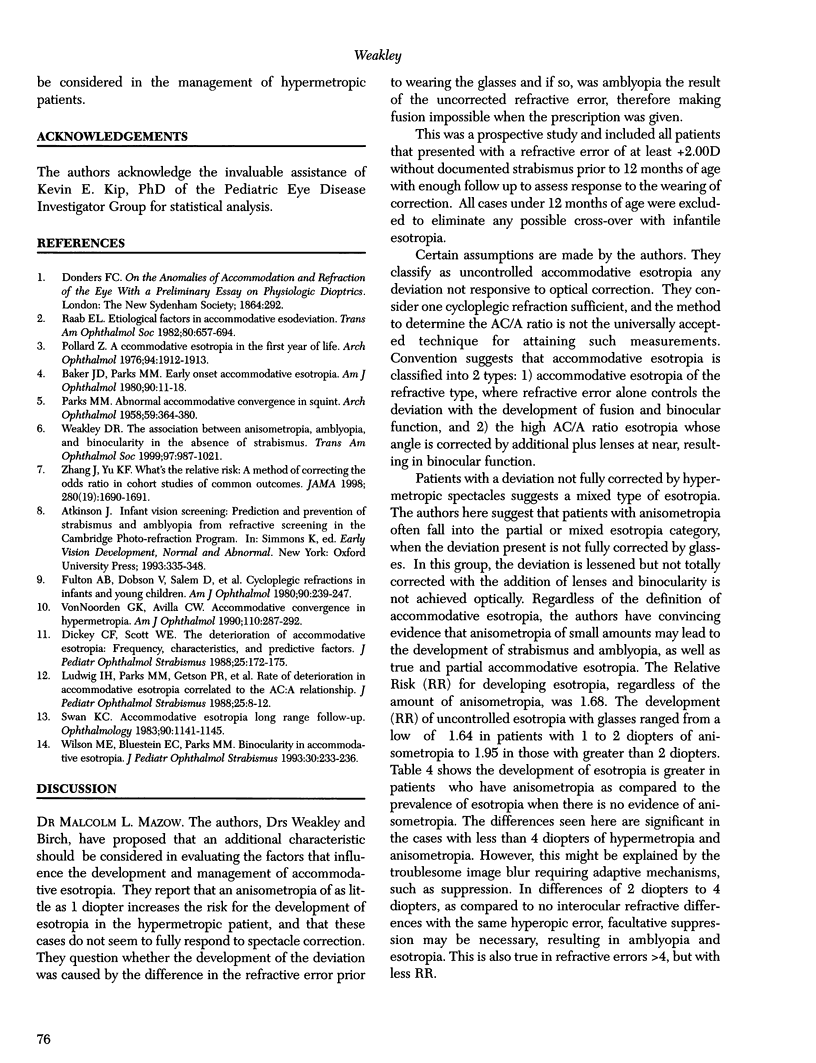
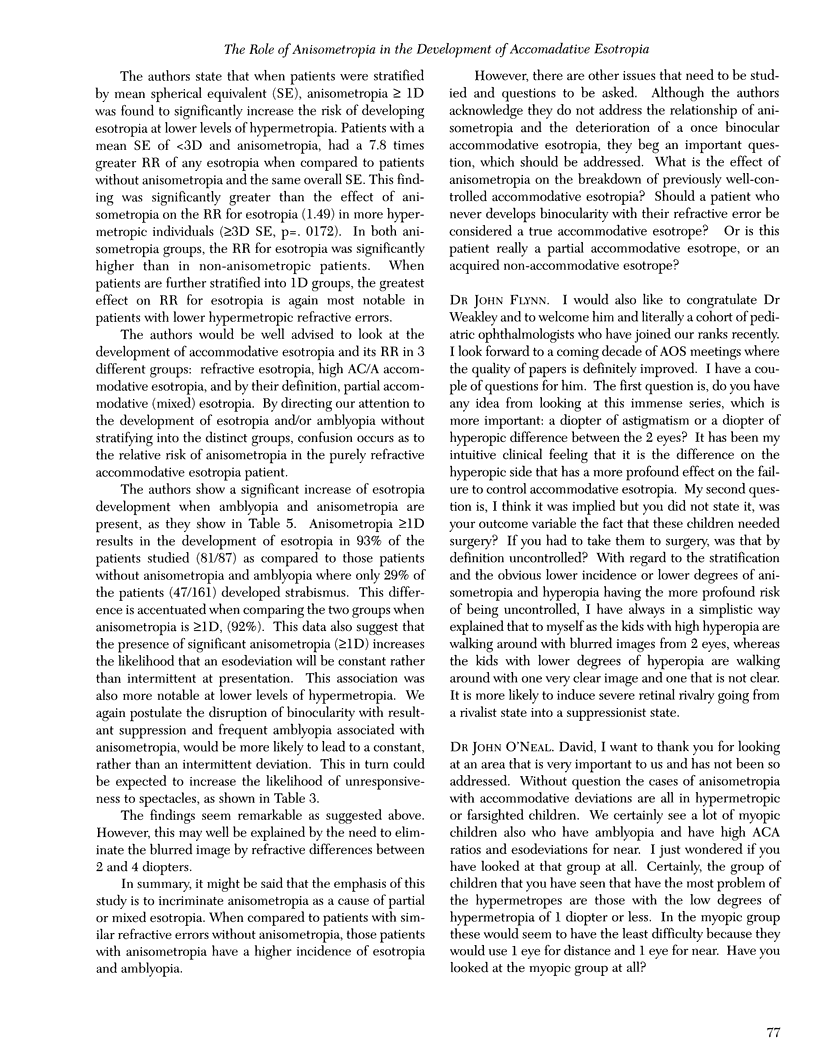
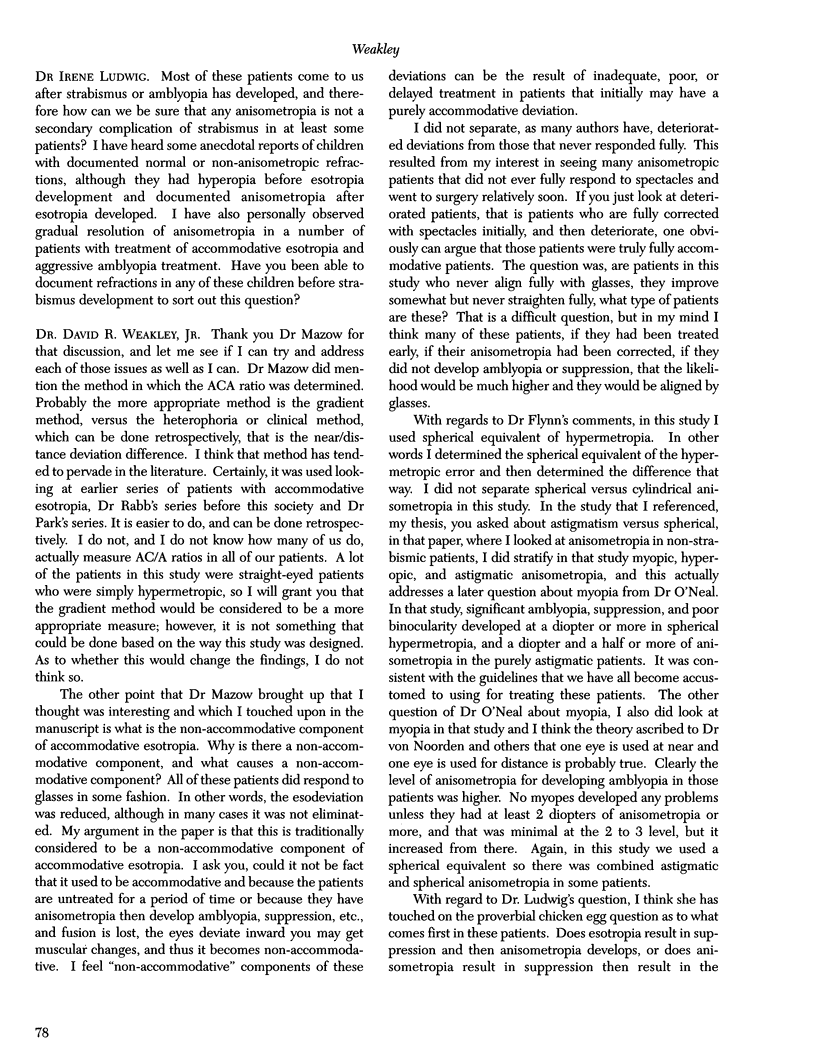
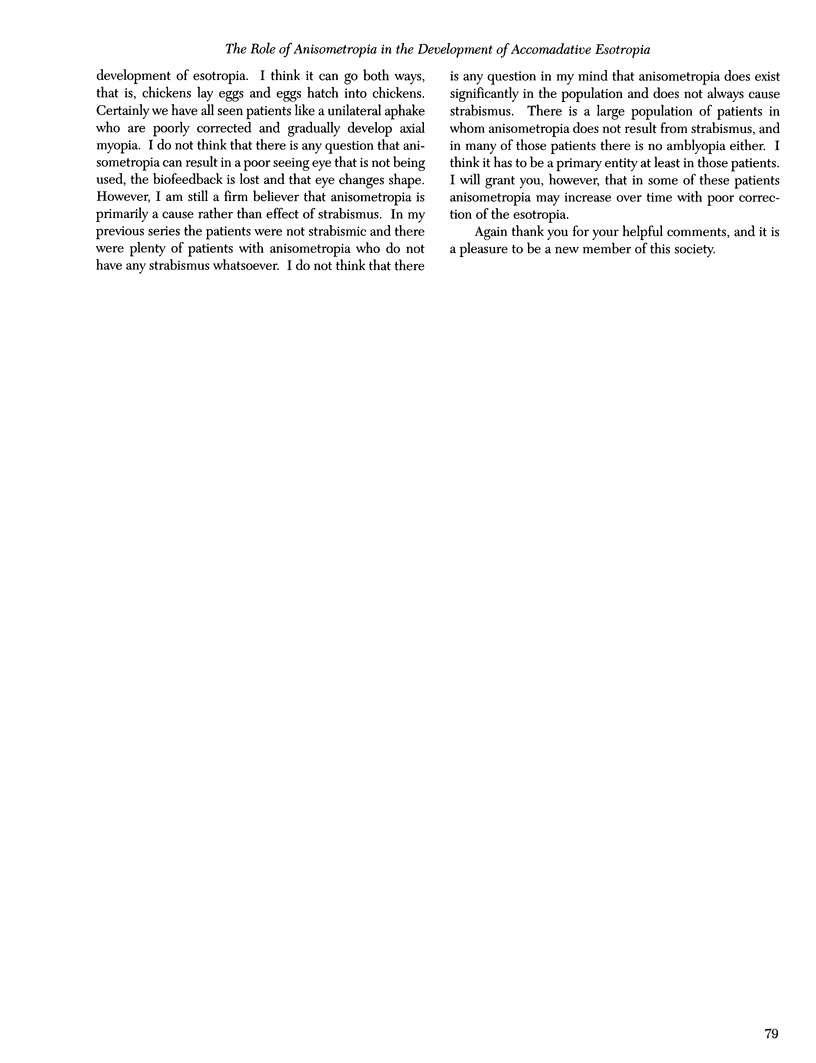
Selected References
These references are in PubMed. This may not be the complete list of references from this article.
- Baker J. D., Parks M. M. Early-onset accommodative esotropia. Am J Ophthalmol. 1980 Jul;90(1):11–18. doi: 10.1016/s0002-9394(14)75070-6. [DOI] [PubMed] [Google Scholar]
- Dickey C. F., Scott W. E. The deterioration of accommodative esotropia: frequency, characteristics, and predictive factors. J Pediatr Ophthalmol Strabismus. 1988 Jul-Aug;25(4):172–175. doi: 10.3928/0191-3913-19880701-06. [DOI] [PubMed] [Google Scholar]
- Fulton A. B., Dobson V., Salem D., Mar C., Petersen R. A., Hansen R. M. Cycloplegic refractions in infants and young children. Am J Ophthalmol. 1980 Aug;90(2):239–247. doi: 10.1016/s0002-9394(14)74861-5. [DOI] [PubMed] [Google Scholar]
- Ludwig I. H., Parks M. M., Getson P. R., Kammerman L. A. Rate of deterioration in accommodative esotropia correlated to the AC/A relationship. J Pediatr Ophthalmol Strabismus. 1988 Jan-Feb;25(1):8–12. doi: 10.3928/0191-3913-19880101-04. [DOI] [PubMed] [Google Scholar]
- PARKS M. M. Abnormal accommodative convergence in squint. AMA Arch Ophthalmol. 1958 Mar;59(3):364–380. doi: 10.1001/archopht.1958.00940040070008. [DOI] [PubMed] [Google Scholar]
- Pollard Z. F. Accommodative esotropia during the first year of life. Arch Ophthalmol. 1976 Nov;94(11):1912–1913. doi: 10.1001/archopht.1976.03910040622009. [DOI] [PubMed] [Google Scholar]
- Raab E. L. Etiologic factors in accommodative esodeviation. Trans Am Ophthalmol Soc. 1982;80:657–694. [PMC free article] [PubMed] [Google Scholar]
- Swan K. C. Accommodative esotropia long range follow-up. Ophthalmology. 1983 Oct;90(10):1141–1145. doi: 10.1016/s0161-6420(83)34415-8. [DOI] [PubMed] [Google Scholar]
- Weakley D. R. The association between anisometropia, amblyopia, and binocularity in the absence of strabismus. Trans Am Ophthalmol Soc. 1999;97:987–1021. [PMC free article] [PubMed] [Google Scholar]
- Wilson M. E., Bluestein E. C., Parks M. M. Binocularity in accommodative esotropia. J Pediatr Ophthalmol Strabismus. 1993 Jul-Aug;30(4):233–236. doi: 10.3928/0191-3913-19930701-04. [DOI] [PubMed] [Google Scholar]
- Zhang J., Yu K. F. What's the relative risk? A method of correcting the odds ratio in cohort studies of common outcomes. JAMA. 1998 Nov 18;280(19):1690–1691. doi: 10.1001/jama.280.19.1690. [DOI] [PubMed] [Google Scholar]
- von Noorden G. K., Avilla C. W. Accommodative convergence in hypermetropia. Am J Ophthalmol. 1990 Sep 15;110(3):287–292. doi: 10.1016/s0002-9394(14)76346-9. [DOI] [PubMed] [Google Scholar]


